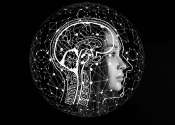Smartphone game data could facilitate earlier diagnosis of autism spectrum disorder and improve treatment
In the game Guess What?, created by Stanford researchers, an adult caregiver holds a smartphone to his or her forehead and asks a child to mimic an image displayed on the screen. It might be a monkey, a soccer player, or ...
Sep 28, 2022
0
39









